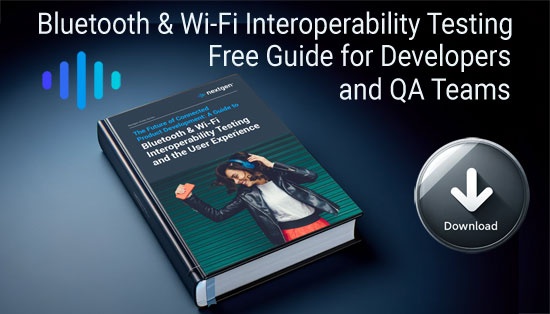What Is Interoperability In The IoT?

Interoperability in the Internet of Things (IoT) refers to the capability of diverse IoT devices, systems, and services to seamlessly communicate, exchange data, and integrate effectively.Interoperability ensures fast and efficient communication between components inside an IoT framework; the various parts – from sensors to applications – all operate logically under the same Interoperability Standards - the latest example being the Matter v1.4 specification introduced in November 2024.
Why Does Interoperability In IoT Matter?
The interoperability of devices and services within an IoT framework is essential for a unified operation methodology – and has important implications for testing/quality assurance environments. Without seamless interoperability, users must contend with multiple incompatible systems that cannot share data accurately or interact in meaningful ways, leading to wasted time and resources.
To ensure effective interoperability, therefore, various cross-vendor standards have been established to facilitate better communication and interoperability between devices and services. These standards dictate how data is transmitted, what type of data can be exchanged, how it is secured and more, making it easier for businesses to develop new IoT applications and services, as they provide a baseline for interoperability to build upon.
What Is The Matter Standard?
The Matter standard is the latest in IoT interoperability standards, developed since 2019 by the Connectivity Standards Alliance (CSA) a members consortium including Apple, Amazon, Google, Samsung, Comcast, Silicon Labs, LG, Infineon and more.
Matter leverages various encryption mechanisms to ensure data security and privacy for users, while also reducing fragmentation by allowing devices from different manufacturers to seamlessly connect and interact with each other, making it easier for users to access their IoT solutions.
The Matter standard features a royalty free, open-source codebase that allows developers to customise and extend the standard as needed (a Matter Software Development Kit is available under the Apache license). Matter has been positively received and is becoming increasingly popular due to its ease of use and secure communication protocols, which make it ideal for a variety of applications within IoT frameworks.

Why Is Effective Interoperability Important ?
By enabling cross-platform compatibility and communication between devices, IoT interoperability standards let QA engineers use device data efficiently and securely, exposing weaknesses and ensuring a product or system’s quality, reliability, and overall performance. Interoperability standards support seamless communication and facilitate a more defined testing process from connection nodes which can range from cloud to data storage to endpoints.
Integrating legacy devices into a test cycle allows validation of interoperability with various legacy and in-market products to assure backwards compatibility. With interoperability built into the testing regime and QA environment, the entire landscape of connected nodes is protected while also allowing any potential issues to be identified early before launch.
Efficient Testing Solutions
By establishing an integrated environment for interoperability testing, and especially utilising the latest automation platforms, deficiencies that can slow down time-to-market can be identified and addressed in a cost-effective manner.
Ultimately, better IoT interoperability improves product performance, user acceptance and saves businesses time and money by enabling a connected infrastructure that enhances the accuracy of tests conducted during development cycles. To find out more about how testing interoperability for the IoT using automation and advanced diagnostics, please contact Nextgen today or call +44 3331 120 000 or lets set up a meeting.




